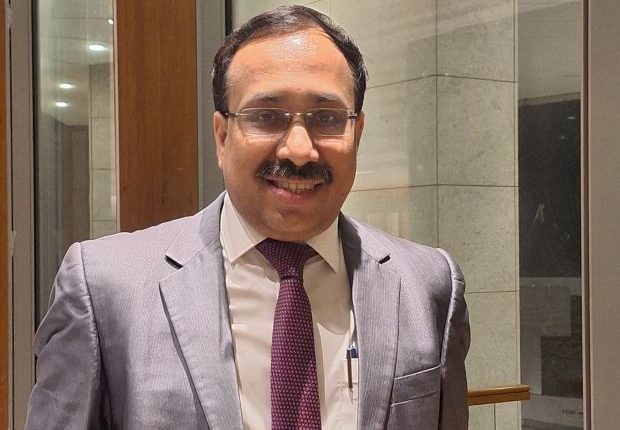Sri Lanka can easily attract millions of Indian tourists, if it plays its cards right
Indian Tourism Ministry Joint Secretary Harikishore S outlines how Sri Lanka can tap into India’s booming outbound travel market through smart branding, niche tourism and cross-border cultural trails
By Robert Antony
COLOMBO – India’s outbound travel market is rapidly expanding, with over 30 million Indians now travelling abroad annually. Sri Lanka, just an hour’s flight away and sharing deep cultural and historical connections with India, is strategically positioned to benefit from this growing demand.
But Sri Lanka must move with clarity and strategy, says Harikishore S, Joint Secretary, Indian Ministry of Tourism. In a brief yet wide-ranging interview with Virakesari during his visit for the ‘India–Sri Lanka Tourism Connection: From Ganges to Kelani’ summit in Colombo, he outlined how the country can sharpen its tourism appeal: by offering targeted experiences for different age groups, building niche identities akin to Kerala’s wellness brand or the Maldives’ luxury model, tapping the vast potential of short-haul travel, and leveraging its natural hospitality and solid infrastructure. He also pointed to emerging opportunities, from cruise tourism and golf tourism to a seamless digital travel system, that could help usher in a new wave of Indian visitors.
Excerpts from the interview:
Question: How do you view the tourism connectivity between Sri Lanka and India? What is your general perspective?
Answer: There are significant opportunities to create Joint Trails between the two countries. For example, the ‘Ramayana Trail’ and ‘Buddhist Trail’. Just as the ‘Himalayan Tourism Trail’ was created connecting Nepal, Bhutan, and India, we can connect the Ramayana and Buddhist trails here. If tourism stakeholders come forward, this will be a massive opportunity.
Q: What needs to be done to increase the number of tourists from India to Sri Lanka and utilize this opportunity fully?
A: More people in India travel domestically. These individuals belong to the upper-middle class economically. They can afford travel expenses. Now, their expectations have increased. Rather than visiting another state, they prefer going to a foreign country. Currently, 30 million Indians travel abroad. This offers two advantages for Sri Lanka. One: Indians want to go abroad. Two: Sri Lanka is very close (short haul). We are culturally united. Travelling to Sri Lanka is easier and less expensive for them than going to London or Germany. It is as easy as travelling from Chennai to Delhi. Seventy per cent of tourists prefer short-haul trips. Therefore, if the right plans are put forward, Sri Lanka can easily attract Indians.
Q: What do Indian tourists expect from Sri Lanka?
A: It depends on their age group and category. Youth go to places like Indonesia for honeymoons and leisure. Sri Lanka has such places and can attract the youth. The elderly mostly prefer pilgrimages. The Ramayana trail can be highlighted for them. Middle-aged people desire new experiences. Sri Lanka can offer small and unique experiences like Tea Tourism, Historical Tourism, and Wellness Tourism. In short, the secret to success is marketing the right product to the right demographic.
Q: Given that over 500 million Indians now belong to the middle class, how can Sri Lanka tailor its tourism strategy to draw them in?
A: Every country positions itself with a specific identity. The Maldives means beaches, Indonesia means leisure, and Vietnam is identified as affordable. When I was the Director of Kerala Tourism, we positioned Kerala as a ‘Luxury Tourism Destination.’ Similarly, Sri Lanka must create a unique market (niche market) and position itself. There is a market opportunity here for all ages and all classes.
Q: What is your assessment of Sri Lanka’s infrastructure and hospitality facilities?
A: From what I observed on the way from the airport, Sri Lanka has three distinct advantages. Excellent infrastructure (roads and hotels), cleanliness, and most importantly, the natural hospitality of the people. People here like welcoming foreigners and interacting with them. The natural environment required for tourism exists here.
Q: Sri Lanka has welcomed around 430,000 Indian visitors so far this year. How do you envision the future of tourism between the two countries?
A: It will definitely increase. SriLankan Airlines is providing an excellent contribution. Apart from this, Sri Lanka can undertake new initiatives like Golf Tourism and Cruise Tourism. Indians generally go on 5-day tours. Short-term tourism plans could be created where travellers come from Mumbai to Sri Lanka by ship, tour the country, and return. If the market opportunity exists, anything is possible.
Q: About 300,000 Sri Lankans visit India annually. What is your message to them?
A: According to statistics, 60% visit for tourism and 23% for business. I have only one thing to say to them: “Feel India.” Previously, tourism was about just touching places; now it has turned into an experience. India is excellent for self-discovery and rejuvenating the mind. Don’t stop with just one visit; explore India more deeply. One cannot fully see India even in a lifetime.
Q: The tourism sector is highly sensitive to sudden changes. What precautionary measures should be taken to safeguard it?
A: Tourist safety is paramount. Floods and natural disasters are cyclical challenges. It took us five years to return to normalcy after COVID. All countries are now trying to ensure safety and facilitate ease of travel. In India, immigration procedures have been digitized. There are simple payment methods like UPI. Our goal is to make the passenger experience simple and safe through digital technology and Artificial Intelligence.
–Robert Antony, a multiple award-winning journalist, currently serves as Assistant Editor at Virakesari



Comments are closed, but trackbacks and pingbacks are open.